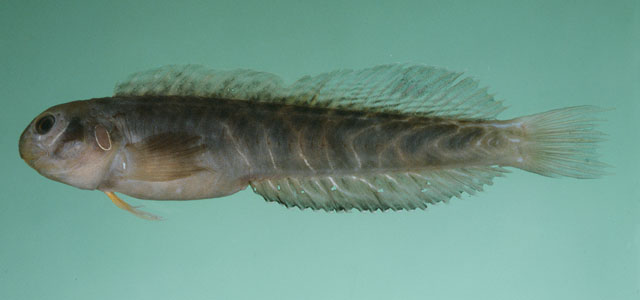| Blenniidae (Combtooth blennies), subfamily: Blenniinae |
| 5 cm SL (male/unsexed) |
|
benthopelagic; brackish; marine; depth range 0 - 2 m |
| Indo-West Pacific: Tanzania and Mozambique to New Guinea, north to the Ryukyu Islands (Ref. 43239). |
|
Dorsal spines (total): 12-14; Dorsal soft rays (total): 17-20; Anal spines: 2-2; Anal soft rays: 21-23. Irregular bands on body. Males with spot and stripes in middles of soft dorsal fin (Ref. 4404). |
| Adults inhabit rocky reefs with oysters, and often found in estuaries (Ref. 90102). Oviparous. Eggs are demersal and adhesive (Ref. 205), and are attached to the substrate via a filamentous, adhesive pad or pedestal (Ref. 94114). Larvae are planktonic, often found in shallow, coastal waters (Ref. 94114). |
|
Least Concern (LC); Date assessed: 27 March 2009 Ref. (130435)
|
| harmless |
|
Also Ref. 90102. Photographed by J.E. Randall at Bar al Hikman (Ref. 28618); specimens collected from rocky bottom at 0.3 m (Ref. 11441). |
Source and more info: www.fishbase.org. For personal, classroom, and other internal use only. Not for publication.

